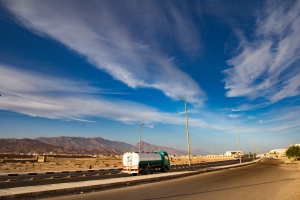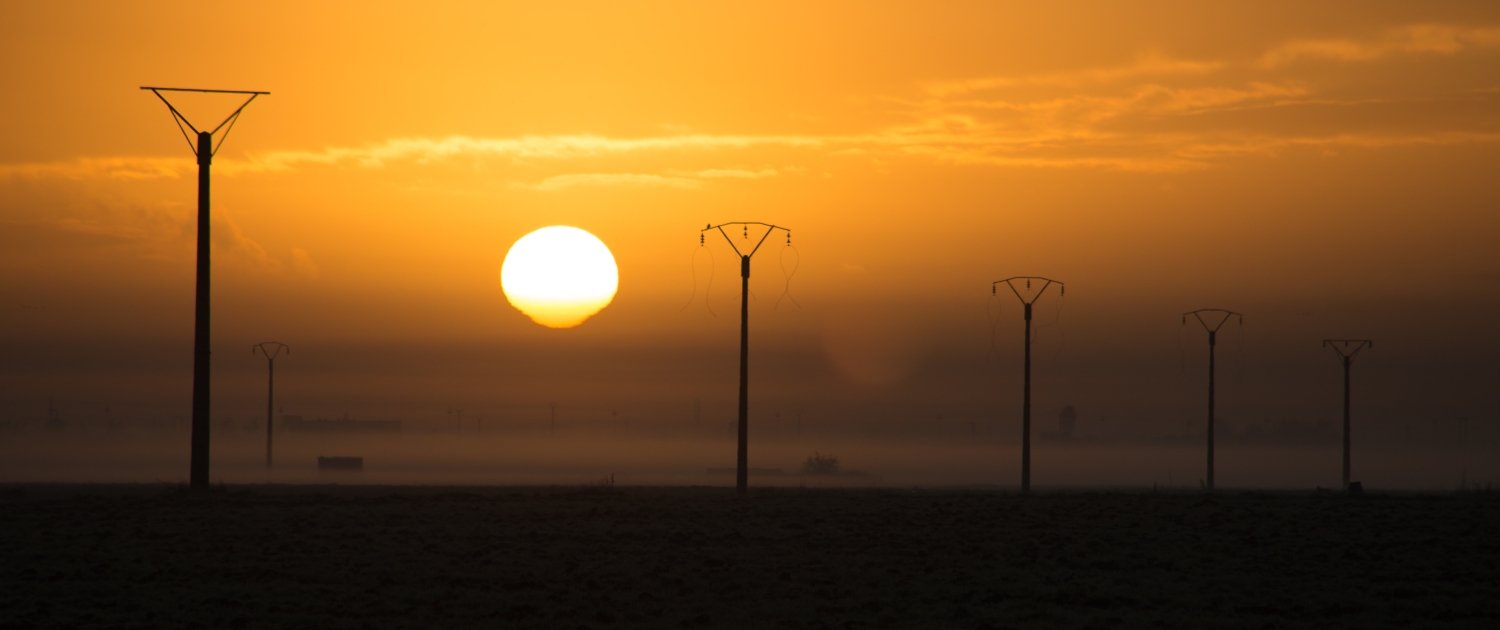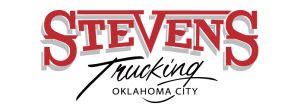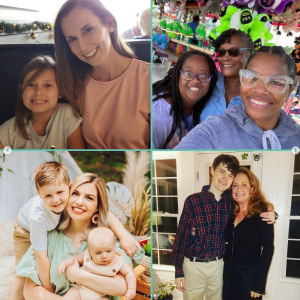
Truck driving is a career that is not for the faint of heart. With long hours, physical demands, and the stress of working on the road, it goes without saying that truck drivers are some of the hardest workers out there. Not only is truck driving a strenuous job, but it is also a vital one. Without the dedication of America’s truck drivers, communities across the nation would go without necessary goods; from food to clothing, truck drivers are the cornerstone of transportation in this country. For this and many other reasons, we honor our truck drivers every year during National Truck Driver Appreciation Week.
History of National Truck Driver Appreciation Week
According to the American Trucking Associations (ATA), National Truck Driver Appreciation Week is a time for Americans to show gratitude to the millions of truck drivers who make sure goods are delivered to communities across the country. This program is an annual celebration that was started by the ATA in 1988 to recognize the vital role that truck drivers play in our supply chain and economy. To put it into perspective, at least 80% of communities throughout the U.S. rely on trucks to meet their freight transportation needs. This year, National Truck Driver Appreciation Week is September 10th –16th.
Best Ways to Celebrate Your Drivers During National Truck Driver Appreciation Week
There are many wonderful appreciation ideas for celebrating your drivers during National Truck Driver Appreciation Week. From bonuses to free lunches, these gestures go a long way in showing gratitude for your drivers. Some other creative ways to celebrate your drivers include:
Ask Your Drivers: One of the best ways to celebrate your team is asking for their feedback. By having an open dialogue with your drivers, you can see the areas where the company is excelling, and the areas that could use improvement. Perhaps your drivers would benefit from the use of new technology. Do you have a bonus structure in place? Even new seats in their trucks could go a long way in showing that you value your drivers’ well-being. By asking them what would make their job more comfortable, you not only are able to show appreciation, but also demonstrate that their opinion has an impact on the company as a whole.
Survival Kits: Way cooler than a gift basket, survival kits are a creative way to put together items that your drivers can use while they are on a haul. From healthy snacks to new tech, a truck driver survival kit is a fun gift that shows your team that you value their hard work and are dedicated to providing them with tools they need to continue to do their job well.
Family Time: Truck driving is demanding physically, but it is also draining emotionally. Many drivers spend weeks at a time away from their families, which is tough. A great way to show appreciation for drivers is to include extra time with family. Whether that is an extra day off, family company events, or the option to bring your family on the road, these gestures mean the world to drivers. This story, shared on Healthy Trucking of America, highlights the ups and downs of having a parent that is an OTR driver. By ensuring that your drivers have a healthy work-life balance and plenty of time to spend with family, you can not only increase driver retention, but show your team that you genuinely care about them having quality time to spend with their spouses and children.
Showing Gratitude for Your Drivers Year-Round
While showing your gratitude to your drivers during National Truck Driver Appreciation Week is a wonderful gesture, year-round appreciation is an important tool for companies to invest time and energy into, so they can increase driver retention. For additional truck driver appreciation ideas, download our Quick Guide to Truck Driver Appreciation.
What are some ways your company shows appreciation for your drivers during National Truck Driver Appreciation Week, or year-round? Connect with us on Facebook, LinkedIn, or Instagram; we would love to hear from you!

 On average, team drivers are more experienced drivers and seasoned negotiators than most solo drivers, so recruiting them to your organization may take a bit more than what you’re used to as a recruiter. If you’re a recruiter who’s recently been tasked with hiring team drivers, here are 4 tips that can help you along the way.
On average, team drivers are more experienced drivers and seasoned negotiators than most solo drivers, so recruiting them to your organization may take a bit more than what you’re used to as a recruiter. If you’re a recruiter who’s recently been tasked with hiring team drivers, here are 4 tips that can help you along the way.  Team drivers on average make more than their solo counterparts. If your carrier is serious about hiring qualified team drivers, you’ll most likely have to up their pay from what you’d give a solo driver.
Team drivers on average make more than their solo counterparts. If your carrier is serious about hiring qualified team drivers, you’ll most likely have to up their pay from what you’d give a solo driver.  Many established team drivers are couples. This makes sense, since if you had to choose to live in a confined space with anyone for days, maybe weeks at a time, it would probably be your significant other.
Many established team drivers are couples. This makes sense, since if you had to choose to live in a confined space with anyone for days, maybe weeks at a time, it would probably be your significant other. 
 We talked to CDL Driver, Angela who hauls with her husband Larry and she told us that the thing he likes the least about team driving is not being able to get a good night’s sleep while the truck is moving. This is a common complaint for a lot of team drivers. In fact, it’s not just issues sleeping, it’s an issue of comfort overall.
We talked to CDL Driver, Angela who hauls with her husband Larry and she told us that the thing he likes the least about team driving is not being able to get a good night’s sleep while the truck is moving. This is a common complaint for a lot of team drivers. In fact, it’s not just issues sleeping, it’s an issue of comfort overall.  We’ve talked before about the power of driver testimonials in the trucking industry. While they’re great for recruiting solo drivers, they’re even better for hiring team drivers.
We’ve talked before about the power of driver testimonials in the trucking industry. While they’re great for recruiting solo drivers, they’re even better for hiring team drivers.  Comprehensive CDL Recruitment Solutions
Comprehensive CDL Recruitment Solutions


 One of the best ways to improve dispatcher-driver relationships is by creating more common ground. Most dispatchers have never been CDL drivers, and most drivers have never been dispatchers. Both sides need to have a basic understanding of what the other is doing in their day-to-day life and to
One of the best ways to improve dispatcher-driver relationships is by creating more common ground. Most dispatchers have never been CDL drivers, and most drivers have never been dispatchers. Both sides need to have a basic understanding of what the other is doing in their day-to-day life and to 
 Like any hard-working employee, truck drivers want to feel respected and
Like any hard-working employee, truck drivers want to feel respected and 

 For the vast majority of the American workforce, their workday is fixed. Once their shift is over, they’re able to go home and spend their free time with their family and friends and sleep in their own bed.
For the vast majority of the American workforce, their workday is fixed. Once their shift is over, they’re able to go home and spend their free time with their family and friends and sleep in their own bed.  For any carrier that is serious about not only recruiting, but retaining top talent, making a concerted effort to offer their drivers a quality work life balance is a must. This means not only offering a blanket home time policy but being flexible with the individual needs of your drivers.
For any carrier that is serious about not only recruiting, but retaining top talent, making a concerted effort to offer their drivers a quality work life balance is a must. This means not only offering a blanket home time policy but being flexible with the individual needs of your drivers.  “We pride ourselves on planning to have our regional drivers home every weekend, as is promised during the recruitment process. As a company, this is very important to us because our owner was a driver himself and understands how vital home time is for our drivers. Additionally, we do our absolute best to tailor home time to the needs of each specific driver, whether it be more/less home time, or being home on certain days of the week.”
“We pride ourselves on planning to have our regional drivers home every weekend, as is promised during the recruitment process. As a company, this is very important to us because our owner was a driver himself and understands how vital home time is for our drivers. Additionally, we do our absolute best to tailor home time to the needs of each specific driver, whether it be more/less home time, or being home on certain days of the week.”  “Our driver managers are trained to understand the importance of work and home life balance. We have programs in place to assure that our drivers get the home time they need. Driver satisfaction has always been important at ARD Trucking since the very beginning. We make home time one of our top priorities.”
“Our driver managers are trained to understand the importance of work and home life balance. We have programs in place to assure that our drivers get the home time they need. Driver satisfaction has always been important at ARD Trucking since the very beginning. We make home time one of our top priorities.” No matter how good of a home time policy you have, OTR and Regional drivers still spend a lot of time away from home. A good way to make drivers feel more comfortable on the road is to let them bring a little piece of home with them, whether that’s by offering a Rider/Pet policy, or upgrading your
No matter how good of a home time policy you have, OTR and Regional drivers still spend a lot of time away from home. A good way to make drivers feel more comfortable on the road is to let them bring a little piece of home with them, whether that’s by offering a Rider/Pet policy, or upgrading your  Giving drivers a quality work life balance is extremely important, but it’s only one piece of the driver
Giving drivers a quality work life balance is extremely important, but it’s only one piece of the driver 







 For the better part of ten years, the trucking industry has been faced with what’s commonly been called a “truck driver shortage”. The thought is that there’s simply not enough drivers to fill the open positions that trucking companies have.
For the better part of ten years, the trucking industry has been faced with what’s commonly been called a “truck driver shortage”. The thought is that there’s simply not enough drivers to fill the open positions that trucking companies have. 
 A common misconception is that truck drivers, like a lot of other workers in our country, don’t want to work anymore and are exiting the industry. The fact is that there are many drivers who do want to work. They just have more options for where they can work and won’t hesitate to make a move if they find a carrier that’s offering better pay, a better work environment, and better home time
A common misconception is that truck drivers, like a lot of other workers in our country, don’t want to work anymore and are exiting the industry. The fact is that there are many drivers who do want to work. They just have more options for where they can work and won’t hesitate to make a move if they find a carrier that’s offering better pay, a better work environment, and better home time Since the problem isn’t a shortage of drivers, but a problem of retaining drivers, the solution is simple; make working conditions better for truck drivers. If you look at any data around truck driver happiness, you’ll see that there’s a laundry list of issues that frustrate drivers.
Since the problem isn’t a shortage of drivers, but a problem of retaining drivers, the solution is simple; make working conditions better for truck drivers. If you look at any data around truck driver happiness, you’ll see that there’s a laundry list of issues that frustrate drivers.  Recruiters should focus on what they can control. This includes
Recruiters should focus on what they can control. This includes  Referring to the problem that the trucking industry is facing as a shortage of truck drivers shifts the blame off of carriers and onto truck drivers. Instead of focusing on improving the conditions that drivers are faced with, (low pay, sparse home time, demanding deadlines) calling it a shortage simply writes off the issue as “truck drivers are too picky and don’t want to work.”
Referring to the problem that the trucking industry is facing as a shortage of truck drivers shifts the blame off of carriers and onto truck drivers. Instead of focusing on improving the conditions that drivers are faced with, (low pay, sparse home time, demanding deadlines) calling it a shortage simply writes off the issue as “truck drivers are too picky and don’t want to work.” April Smith is the Recruiting Manager with Drive My Way client,
April Smith is the Recruiting Manager with Drive My Way client,  Lansing Building Products Partners with Drive My Way for Success
Lansing Building Products Partners with Drive My Way for Success
 The trucking industry is years into the “Driver Shortage”, and carriers are still having a difficult time hiring and retaining top talent. Drivers now have a lot of options for which carrier they work for, and they’re choosing to work for ones that have a proven track record of listening to their drivers.
The trucking industry is years into the “Driver Shortage”, and carriers are still having a difficult time hiring and retaining top talent. Drivers now have a lot of options for which carrier they work for, and they’re choosing to work for ones that have a proven track record of listening to their drivers. Driver feedback can help carriers solve the two biggest problems facing trucking right now: recruiting and retention.
Driver feedback can help carriers solve the two biggest problems facing trucking right now: recruiting and retention.
 Putting up a suggestion box in the break room probably won’t be enough to get the kind of feedback your carrier needs to really make a difference. You’ll want to create multiple avenues for drivers to share their thoughts.
Putting up a suggestion box in the break room probably won’t be enough to get the kind of feedback your carrier needs to really make a difference. You’ll want to create multiple avenues for drivers to share their thoughts. 

 Like most everyone, truck drivers are all over social media. It’s where they connect with other drivers, share tips for being on the road, and discuss current happenings. It’s also where they look for jobs and research carriers.
Like most everyone, truck drivers are all over social media. It’s where they connect with other drivers, share tips for being on the road, and discuss current happenings. It’s also where they look for jobs and research carriers. 





